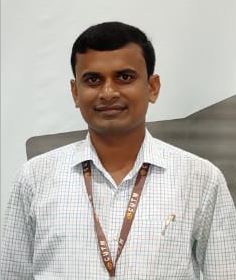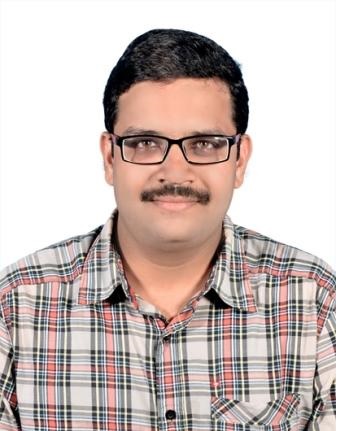Domain Track: Communication Systems
Course Attendees
Still no participant
Course Reviews
Still no reviews
Track Total Credits ( 4-8-6)
Domain Code : CSCU2080
Courses Division( list all divisions):
1 •Microwave & RADAR Communications (2-1-0)-CUCS2084
2 •Satellite & TV Communications (1-2-0)-CUCS2081
3 •Cell Site and BTS Installation (0-3-0)-CUCS2087
4 • Optics and Wireless Sensor Networks (1-2-0)-CUCS2086
5 •Project (0-0-6)-CUCS2085
Domain Track Objectives:
1. Develop the skills required to design next-generation wireless sensor networks
2. To involve the students in the theory and practice of wireless communications
Domain Track Learning Outcomes:
1. Various Communications available and their challenges in the modern era.
2. Antenna designs for high-frequency applications
3. Basic Mobile Tower troubleshooting and maintenance
4. Installation of BTS and measuring different RF factors involved
5. Analysis of existing communication protocols
Course content
1. Microwave & RADAR Communications
1.1 Introduction to Microwaves: Microwave frequencies
1.2 Scattering matrix formulation
1.3 Passive microwave devices
1.4 Active Microwave Devices
1.5 Study of field pattern of various modes inside a rectangular waveguide
1.6 Microwave Measurements
1.7 Transit time limitations in Microwave Bipolar Transistors
1.8 Power frequency limitations Microwave Field Effect Transistors
1.9 Gunn Effect
1.10 IMPATT diodes
1.11 TRAPATT diodes
1.12 Microwave vacuum tube based devices
1.13 Limitations of conventional tubes at UHF
1.14 Microwave Klystron
1.15 Reflex klystron,
1.16 Traveling wave tube
1.17 Magnetron
1.18 Introduction to Smith chart and its application for the unknown impedance measurement
1.19 Scattering Matrix Parameters
1.20 Introduction to radar and RADAR Parameters
1.21 MTI RADAR
1.22 FMCW RADAR
1.23 Tracking RADAR
1.24 Monpulse RADAR
1.25 RADAR Receiver
1.26 Synthetic Aperture RADAR
Text Books:
1. R E Collin, “Foundation for Microwave Engineering”, John Wiley & Sons, 2nd Edition, 2007
2. S Y LIAO, “Microwave Devices and Circuits”, PHI, 3rd Edition, 2003.
3. Merrill I skolnik, “Introduction to Radar Systems’, McGraw Hill, 2nd Edition,2007.
4. G S N Raju, “Radar Engineering and Fundamentals of Navigational Aids”, IK international Publishers, 2008
5. G S N Raju, “Microwave Engineering ”, IK international Publishers, 2008.
2. Satellite & TV Communications (32 Hours)
2.1 Configuration of a satellite communications system
2.2 Types of orbit
2.3 Radio regulations
2.4 Keplerian orbits
2.5 Useful orbits for satellite communication
2.6 Perturbations of orbits
2.7 Digital video broadcasting via satellite (DVB-S)
2.8 Second generation DVB-S
2.9 Digital transmission of telephony
2.10 Digital broadcasting of television
2.11 Configuration of a link
2.12 Uplink received power
2.13 Downlink received power
2.14 Additional losses
2.15 Noise power spectral density at the receiver input
2.16 Individual link performance
2.17 Influence of the atmosphere
2.18 Mitigation of atmospheric impairments
2.19 Overall link performance with transparent satellite
2.20 Overall link performance with regenerative satellite
Case Study: A field report as a part of practice will be submitted by visiting the Nearest center and observing the satellite links and TV transmission techniques.
Text Book
1. Satellite communications systems / Gerard Maral, Michel Bousquet. — 5th ed, wiley , 2010.
2. Satellite Communications, by Dennis Roddy (Fourth edition), McGraw Hill
3. Satellite Communication, by Timothy Pratt, Charles Bostian, Jeremy Allnutt (Second Edition), John Wiley & Sons
3.Cell Site and BTS Installation (36 Hours)
3.1 Antennas for mobile Tower
3.2 Power supply at BTS
3.3 Equipment used in the Shelter
3.4 Power Interface Unit (PIU)
3.5 Line Conditioning Unit (LCU)
3.6 Free Cooling Unit (FCU)
3.7 Preventive Maintenance (PM) & site management
3.8 Basic functioning of alarm box and the interface
3.9 Concept on TRX & Baseband receiver unit.
3.10 RF Propagation path loss
3.11 Frequency hopping and Planning
3.12 RF Optimization
3.13 GSM RF Drive Test
3.14 3G Optimization
3.15 EMF Radiation Calculation and testing
3.16 4G Optimization
3.17 RF Propagation path loss
3.18 Frequency hopping and Planning
3.19 RF Optimization
3.20 GSM RF Drive Test
3.21 3G Optimization
3.22 EMF Radiation Calculation and testing
3.23 4G Optimization
Text Book:
1. Advanced cellular network planning and optimization 2G/2.5G/3G. . .evolution to 4G , Author: Ajay R Mishra, Nokia Networks, John Wiley & Sons Ltd, The Atrium, Southern Gate, Chichester, West Sussex PO19 8SQ, England
2. Radio Network Planning and Optimisation for UMTS, Second Edition, JaanaLaiho and AchimWacker, Nokia Group, Finland, Toma´ sˇ Novosad, Nokia Networks, Nokia Group, USA, John Wiley & Sons Ltd, The Atrium, Southern Gate, Chichester, West Sussex PO19 8SQ, England
3. Material: E1-E2 Upgradation Course –Consumer Mobility, RF Planning and Drive Test
4. Material: GTL, RF Optimisation
4.Optics and Wireless Sensor Networks (36 Hours)
4.1 Propagation of signals in optical fiber:
4.2. Transmission characteristics of optical fiber
4.3 .Optical fiber Transmitters.
4.4. Optical Components.
4.5 Optical fiber loss measurement using power meter, LASER and OTDR.
4.6. Layered Protocol Model in the Transport Network.
4.7. SONET and SDH, Architecture of Optical Transport Networks (OTNs)
4.8 Implementation and performance analysis of TCP/IP protocols. Tools to be used: NS2 Simulator and Socket Programming
4.9. Challenges for Wireless Sensor Networks.
4.10. Single-Node Architecture - Hardware Components.
4.11. Network Architecture - Sensor Network Scenarios
4.12. Physical Layer and Transceiver Design Considerations.
4.13. Routing Protocols.
4.14. Topology Control, Clustering.
4.15 Arduino and Wireless Communications
4.16. Sensor Tasking and Control.
4.17 WSN using Arduino with Wireless modules
4.18 MATLAB Experiments Related to Compressed Sensing for Energy-Efficient WSN
4.19. Sensor Node Hardware – Berkeley Motes, Programming Challenges.
4.20. Node-level Software platforms, Node-level Simulators.
TEXT Books
1. John M. Senior, "Optical fibre communication", Pearson edition, 2000
2. Uyless Black "Optical Networks ", Pearson Education , 2011.
3. Holger Karl and Andreas Willig, “Protocols and Architectures for Wireless Sensor Networks", John Wiley, 2005
4. KazemSohraby, Daniel Minoli, &TaiebZnati, “Wireless Sensor Networks-Technology, Protocols, and Applications”, John Wiley, 2007. Anna Hac, “Wireless Sensor Network Designs”, John Wiley, 2003
Reference books:
1. Rajiv Ramswami and K. N. Sivarajan, "Optical Networks", Morgon Kauffman Publishers, 2008.
2. Gerd Kaiser, "Optical fiber Communication Systems", John Wiley, New York, 2009.
3. Feng Zhao and Leonidas J. Guibas, “Wireless Sensor Networks- An Information Processing Approach", Elsevier, 2007.
List of Projects
(To follow the Gate Process)
• Insulin Pump Prototype Development
• Communication Receiver Performance Analysis Machine Learning Algorithm (Using Python/ MATLAB)
• Smart Antennas Design using HFSS/CST for Medical Applications
• 5G NR Study
• WSN using Arduino with Wireless Modules BLE, WiFi, ZigBee and LoRa
• Spectral Efficiency improvement and Hardware complexity reduction using MIMO technique
• FSO Communication, VLC using MATLAB Simulink
• RADAR System Implementation using MATLAB/SIMULINK
• Door and Window Detection for Social Robot Navigation
1. Microwave & RADAR Communications
Session 1
Introduction to Microwaves: Microwave frequencies - advantages and applications,
https://youtu.be/cfXzwh3KadE
Session 2
Scattering matrix formulation: Concept of N port scattering matrix representation - S parameters properties,
https://youtu.be/-Pi0UbErHTY
Session 3
Passive microwave devices: bends – corners – attenuators - phase changers, S Matrix Calculations for 2 port Junction: E plane and H plane Tees - Magic Tee –
https://youtu.be/5Q4TNOf1gMc
https://youtu.be/F2HQTglm2Zg
https://youtu.be/if30sXaKWkY
Session 4
Directional Coupler - Circulator and Isolator.
https://youtu.be/LhaCWSxLVPo
https://youtu.be/D-51XhiPIO4
https://youtu.be/05LX8zzKhZ0
Session 5
Study of field pattern of various modes inside a rectangular waveguide
https://www.iitk.ac.in/mimt_lab/vlab/index.php?pg=waveguide/aim&usr=vamshi51&enc=52b8bc63db0e63b9c0a85dbdd413b70e
Session 6
Measurement of the dielectric constant and loss tangent of materials in microwave frequency band using a rectangular waveguide cavity
https://www.iitk.ac.in/mimt_lab/vlab/index.php?pg=cavity/aim&usr=vamshi51&enc=52b8bc63db0e63b9c0a85dbdd413b70e
Session 7
Transit time limitations in Microwave Bipolar Transistors, Power frequency limitations
https://youtu.be/the7MVeR9tE
Session 8
Microwave Field Effect Transistors
https://youtu.be/7sSUcFnE-6M
Session 9
Gunn Effect: RWH theory - High-field domain and modes of operation - microwave amplification,
https://youtu.be/ZhBspVdEUzA
Session 10 & 11
Avalanche transit time devices: IMPATT and TRAPATT diodes, parametric amplifiers.
https://youtu.be/C-byYQ0oH0M
Session 12
Microwave vacuum tube
https://youtu.be/TsBTI3tO5-8
Session 13
Limitations of conventional tubes at UHF
https://youtu.be/Fvud81pYGOg
Session 14 & 15
Microwave Klystron: Two cavity Klystron - velocity modulation - multicavity klystron -Reflex klystron,
https://youtu.be/XHnnbVpkfU8
Session 16
Traveling wave tube
https://youtu.be/aGfr_yQmo6g
Session 17
Magnetron
https://youtu.be/bUsS5KUMLvw
Session 18
Introduction to Smith chart and its application for the unknown impedance measurement
https://youtu.be/M-YAQDGhGyk
https://www.iitk.ac.in/mimt_lab/vlab/index.php?pg=smith/aim&usr=vamshi51&enc=52b8bc63db0e63b9c0a85dbdd413b70e
Session 19
Concept of Generalized N-port scattering parameters, and formulation of these parameters into 2-port reflection and transmission coefficients.
https://www.iitk.ac.in/mimt_lab/vlab/index.php?pg=s_parameter/aim&usr=vamshi51&enc=52b8bc63db0e63b9c0a85dbdd413b70e<
Session 20
Introduction to radar and radar parameters
https://youtu.be/4rIHdcwlvlk
https://youtu.be/_CqMVr75zHg
https://youtu.be/bU_ABeCdWYs
https://youtu.be/HskBOE3bYIg
Session 21
MTI RADAR
https://youtu.be/ql2Y-3hOfGY
https://youtu.be/JxfWi85l0hg
Session 22
FM CW radar
https://youtu.be/NUKlckVB5XM
https://youtu.be/rQGj1G9yD_Y
Session 23
Tracking RADAR
https://youtu.be/7Bi71Q9ObJQ
Session 24
Monopulse: amplitude comparison and phase comparison methods, Radar antennas.
https://youtu.be/p2ify-2DQdE
Session 25 & 26
Radar Receiver: The Radar Receiver, Receiver Noise Figure, Super Heterodyne Receiver, Duplexers and Receivers Protectors, Radar Displays.
https://youtu.be/Y48nuJAACCE
https://youtu.be/Sl_yGeDelK8
2. Satellite & TV Communications
Session 1
Configuration of a satellite communications system
https://www.youtube.com/watch?v=efjBiVN_N3M
Session 2
Types of orbit
https://www.youtube.com/watch?v=S91g28GPN6Q
Session 3
Radio regulations
https://www.youtube.com/watch?v=sitl0o1bDNg
Session 4
Keplerian orbits
https://www.youtube.com/watch?v=AReKBoiph6g
Session 5
Useful orbits for satellite communication
https://www.youtube.com/watch?v=lyZekrR245g
Session 6
Perturbations of orbits
https://www.youtube.com/watch?v=RX-AVPPPsfc
Session 7
Digital video broadcasting via satellite (DVB-S)
https://www.youtube.com/watch?v=THjqSx49dYM
Session 8
Second generation DVB-S
https://www.youtube.com/watch?v=TaVyoqoW-Ps
Session 9
Digital transmission of telephony
https://www.youtube.com/watch?v=NhWG1zbdPYI
Session 10
Digital broadcasting of television
https://www.youtube.com/watch?v=6TAuduk9oL8
Session 11
Configuration of a link
https://www.youtube.com/watch?v=wwFbiQYLXxA&t=7s
Session 12
Uplink received power
https://www.youtube.com/watch?v=LnakgKx5AdY
Session 13
Downlink received power
https://www.youtube.com/watch?v=e9nPkpsk9pI
Session 14
Additional losses
https://www.youtube.com/watch?v=p93dz44uzBk
Session 15
Noise power spectral density at the receiver input
https://www.youtube.com/watch?v=Hdc4IQIbmQQ
Session 16
Individual link performance
https://www.youtube.com/watch?v=YJXm0iRWmp4&list=PLAnjLC20C-XQnoowCtt-67WmyxoQPu2Fi&index=11
Session 17
Influence of the atmosphere
https://www.youtube.com/watch?v=kJ21sjb6egE&list=PLAnjLC20C-XQnoowCtt-67WmyxoQPu2Fi&index=20
Session 18
Mitigation of atmospheric impairments
https://www.youtube.com/watch?v=V2xnZxpurVM&list=PLAnjLC20C-XQnoowCtt-67WmyxoQPu2Fi&index=21
Session 19
Overall link performance with transparent satellite
https://www.youtube.com/watch?v=tEKAOmcgHIo&list=PLAnjLC20C-XQnoowCtt-67WmyxoQPu2Fi&index=18
Session 20
Overall link performance with regenerative satellite
https://www.youtube.com/watch?v=Y2e7Si66E0o&list=PLAnjLC20C-XQnoowCtt-67WmyxoQPu2Fi&index=17
Session 21
Study of 5G new radio (NR) standard, modulation Techniques used for 2G-5G
https://www.youtube.com/watch?v=5040OAz_DRI
3. Cell Site and BTS Installation
Session 1
Antennas for mobile Tower
https://www.youtube.com/watch?v=PnfJ_btbW2A
Session 2
Power supply at BTS
https://www.youtube.com/watch?v=3IG1IXPCSJs
Session 3
Equipment used in the Shelter
https://www.youtube.com/watch?v=JFCtcjdCVec
Session 4
Power Interface Unit (PIU)
https://www.youtube.com/watch?v=RsTaOo1DHwY
Session 5
Line Conditioning Unit (LCU)
https://www.youtube.com/watch?v=1Jcdpyl-HBc
Session 6
Free Cooling Unit (FCU)
https://www.youtube.com/watch?v=lBmvi-pGMHw
Session 7
Preventive Maintenance (PM) & site management
Session 8
Basic functioning of alarm box and the interface
Session 9
Concept on TRX & Baseband receiver unit
Session 10
RF Propagation path loss
https://www.youtube.com/watch?v=-XHWEYxW_c4
Session 11
Frequency hopping Spread Spectrum
https://www.youtube.com/watch?v=PUQMKrtUYz8&t=2s
Session 12
RF Optimization
https://www.youtube.com/watch?v=DXK3Xmzo9Es
Session 13
GSM RF Drive Test
https://www.youtube.com/watch?v=qCgsIsB693c
Session 14
3G Optimization
https://www.youtube.com/watch?v=gkCpTWD-dss
Session 15
EMF Radiation Calculation and testing
https://www.youtube.com/watch?v=P_JuymDHcwQ
Session 16
4G Optimization
https://www.youtube.com/watch?v=6bzhoH1EV0k
4. Optics and Wireless Sensor Networks
Session 1
Propagation of signals in optical fiber
https://www.youtube.com/watch?v=37DYaG41rZ4
Session 2
Transmission characteristics of optical fiber
https://www.youtube.com/watch?v=u1kweXpePA8
Session 3
Optical fiber Transmitters
https://www.youtube.com/watch?v=NfRO3YSViFw
Session 4
Optical Components
https://www.youtube.com/watch?v=v3PAcshaJag
Session 5
Optical fiber loss measurement using power meter, LASER and OTDR
https://www.youtube.com/watch?v=JiujKbgtdAY
Session 6
Layered Protocol Model in the Transport Network
https://www.youtube.com/watch?v=0YE3judB1b8
Session 7
SONET and SDH, Architecture of Optical Transport Networks (OTNs)
https://www.youtube.com/watch?v=SVuJLpYMOeM
Session 8
Implementation and performance analysis of TCP/IP protocols. Tools to be used: NS2 Simulator and Socket Programming
https://www.youtube.com/watch?v=OTwp3xtd4dg
Session 9
Challenges for Wireless Sensor Networks
https://www.youtube.com/watch?v=PrnNKZJj-Oc
Session 10
Single-Node Architecture - Hardware Components
https://www.youtube.com/watch?v=WNAHDwaonxM
Session 11
Network Architecture - Sensor Network Scenarios
https://www.youtube.com/watch?v=-L9P2wgm_-M
Session 12
Physical Layer and Transceiver Design Considerations
https://www.youtube.com/watch?v=UKQ4jbanDNw
Session 13
Routing Protocols
https://www.youtube.com/watch?v=pAopv0-lKxY
Session 14
Topology Control, Clustering
https://www.youtube.com/watch?v=qpfABe-UY_o
Session 15
Arduino and Wireless Communications
https://www.youtube.com/watch?v=Zd3h6SrsGZM
Session 16
Sensor Tasking and Control
https://www.youtube.com/watch?v=NePXqRwvmbs
Session 17
WSN using Arduino with Wireless modules
https://www.youtube.com/watch?v=crjv9021Dxk
Session 18
MATLAB Experiments Related to Compressed Sensing for Energy-Efficient WSN
https://www.youtube.com/watch?v=cs31tN76gaE
Session 19
Sensor Node Hardware – Berkeley Motes, Programming Challenges
https://www.youtube.com/watch?v=ccfXPqyPIiA
Session 20
Node-level Software platforms, Node-level Simulators
https://www.youtube.com/watch?v=HGZ6vcGGyFk
Our Main Teachers

I received my M. Tech degree in 2015 from IIT, Kharagpur and PhD degree from Deakin University, Australia in 2021. Now, I am working as a Professor and HOD in the Departmentof Electronics and Communication Engineering, SoET, Bhubaneswar campus, CUTM. Research Interests: Wireless Energy Harvesting System. Metamaterial Study. Printed Microstrip Antenna Design. Transceiver […]

Prabhat K. Patnaik
Asst. Professor in School of Engineering and Technology Department of ECE
VIEW PROFILEPrabhat K. Patnaik received a M.Tech. from Berhampur University in 2012 and B.Tech from Biju Patnaik University of Technology and Management in 2007.Presently he is working as Asst. Professor in Electronics and Communication Engineering Department at Centurion University of Technology and Management, Odisha, India. He has published 10 research articles. His current research includes digital […]

